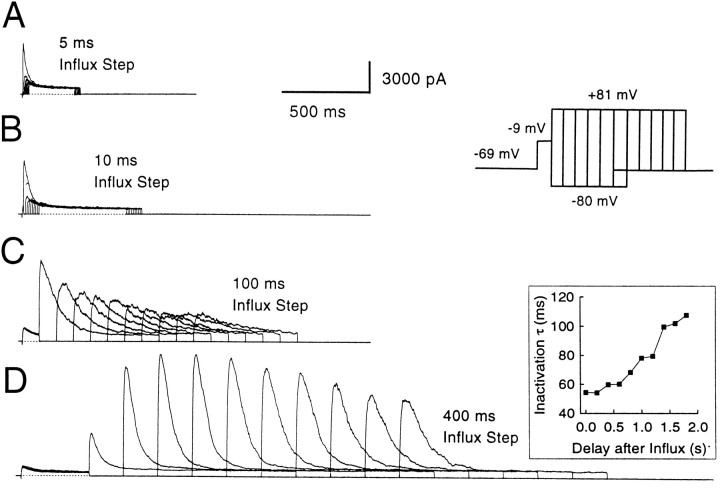Fig. 12.
Submembrane [Ca2+]i drops rapidly after short influx steps but persists at significant levels for long durations after long influx steps. The cell was held at −69 mV, stepped to −9 mV to produce Ca2+ influx, and then stepped back to −80 mV for variable recovery periods before applying a step to +81 mV to activate BK current again. The recovery period duration at −80 mV ranged from no recovery (0 msec) to several seconds. In A, the influx step was 5 msec long; the recovery steps at −80 mV were incremented by 5 msec. In B, the influx step was 10 msec in duration; the recovery steps were incremented by 10 msec. In C, the influx step was 100 msec in duration; the recovery steps were incremented by 100 msec. InD, the influx step was 400 msec; the recovery steps were incremented by 200 msec. The inactivation time constants of BK currents elicited at +81 mV in D are shown in the inset on theright. Because channels recover from inactivation during the initial recovery steps, large increases in BK current elicited at +81 mV are observed as the recovery duration is increased. Perforated-patch method. Rs, 9 MΩ;Cm, 6 pF; 80% compensated.

